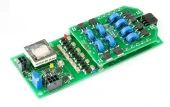Description
QBU-mini Pockels Cell Driver
The 4kV QBU-mini-series Pockels cell drivers are designed to deliver exceptional performance in generating bipolar high voltage pulses. These drivers are capable of operating at high repetition rates with impressively fast rise and fall times, typically around 10 ns.
The voltage amplitude and pulse width are adjustable, ranging from a minimum of 200 ns to continuous wave (CW), providing versatility for various applications. The bipolar nature of the QBU-mini-series means that a 4 kV pulse is achieved by applying +2 kV to the positive output and -2 kV to the negative.
These 4kV Pockels cell driver modules are powered by a +24 V DC supply and require a pulse generator to set the operating frequency and pulse width. Users can program the output voltage level within the working range manually via an onboard trimpot or remotely by applying a DC voltage to the respective pin. Incorporating an external low voltage TTL signal for triggering allows for diverse output modes, including base voltage settings and user-defined non-periodic pulses. This flexibility makes the QBU-mini-series an excellent choice for applications requiring precise pulse control and high performance.
Ordering Information: The QBU-mini series offers several modifications to cater to specific voltage requirements. The part number configuration is QBU-mini-XXYY, where 'XX' represents the maximum output high voltage level and 'YY' represents the minimum output high voltage level. Popular configurations include the QBU-mini-4016, QBU-mini-3514, QBU-mini-3012, QBU-mini-2008, and QBU-mini-1004, each offering distinct high voltage adjustment ranges. Custom modifications are available upon request, ensuring that specific operational needs can be met with precision.
The "parent" model of QBU-mini is QBU Pockels cell driver, with the pulses up to 6 kV and both edges fast.
4 kV QBU-mini Pockels Cell Driver, both Edges Fast, Flexible Adjustment
Specifications
| Input: | +24V DC; 0.5A max |
|---|---|
| Pulse Width: | 200 ns – ∞ |
| Max. Repetition Rate: | > 8 kHz at the full load (3.5 kV, 11 pF) |
| Rise / Fall Time: | < 15 ns, typ. ~10 ns |
| Jitter: | ± 2 ns typ. |
| Delay Time: | 150 ns typ. |
| Protections: | from overheating (approx. 72 °C) |
| Size (LxWxH): | 140 x 50 x 20 mm |
| Weight: | < 0,1 kg |
| Pulse Amplitude: | Up to 4 kV |
| Max. Repetition Rate: | Up to 30-50 kHz and higher at lower load capacitances and voltages |
Features
- Bipolar High Voltage Pulses: The 4kV Pockels cell driver module produces bipolar high voltage pulses with adjustable voltage amplitude, enhancing precision in various applications.
- Fast Rise and Fall Time: Experience rapid response with typical rise and fall times of ~10 ns, ensuring quick and efficient performance.
- Adjustable Pulse Width: Customize your pulse width from a minimum of 200 ns to continuous wave (CW) for tailored application needs.
- High Repetition Rate: Operates at a repetition rate greater than 8 kHz at full load (3.5 kV, 11 pF), suitable for high-frequency applications.
- Versatile Voltage Control: Output voltage levels can be programmed manually via an onboard trimpot or remotely through a DC voltage, providing flexibility in control.
- External Triggering: Trigger using an external low voltage arbitrary TTL signal to set various output modes, including base voltage or user-defined non-periodic pulses.
- Protection Features: Built-in protections against overheating, activating at approximately 72 °C, ensuring safe operation.
- Compact Design: With dimensions of 140 x 50 x 20 mm and weighing less than 0.1 kg, it is easy to integrate into existing systems.
Applications
The 4kV Pockels cell driver is specially designed to control Pockels cells by applying a fast switching high voltage. The module allows advanced Q-switching, beam slicing, pulse picking usage scenarios
Frequently Asked Questions
What is the 4kV Pockels cell driver module?
What power supply does the QBU-mini require?
How can the output voltage level be programmed?
What is the typical rise and fall time of the 4kV Pockels cell driver?
What are the environmental operating conditions for the QBU-mini?
What are the dimensions and weight of the QBU-mini 4kV Pockels cell driver module?
What is the maximum repetition rate of the QBU-mini?
Similar Products
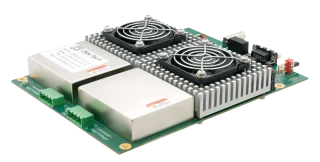
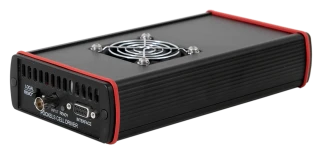
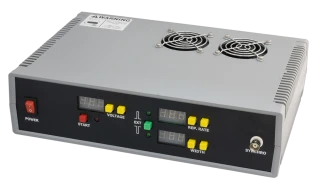
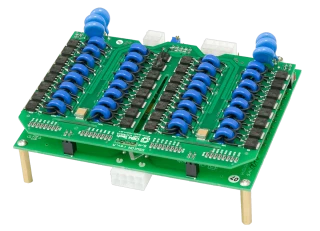
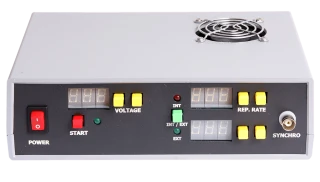
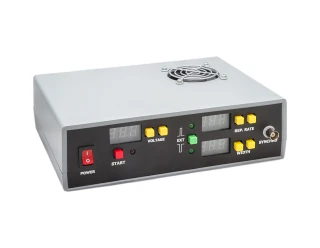
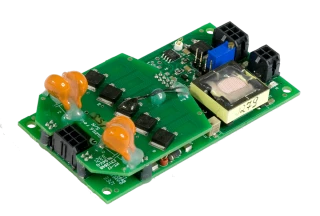
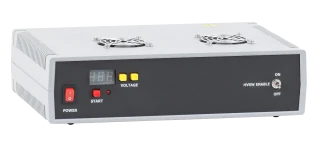
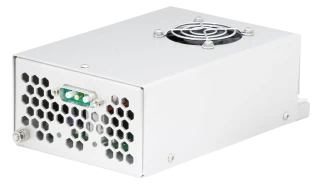
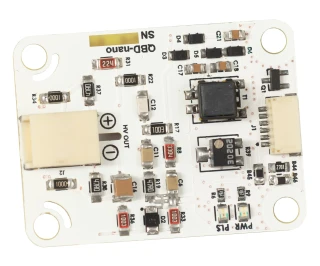
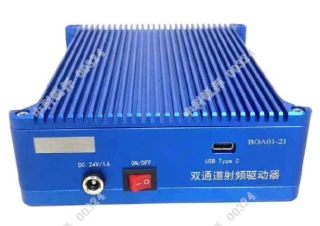
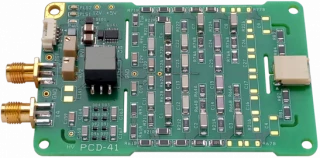
Your inquiry has been received.
Create an account by adding a password
Why create an account?
- Auto-complete inquiry forms
- View and manage all your past messages
- Save products to your favorites
- Close your account anytime — no hassle
